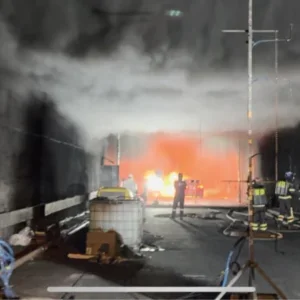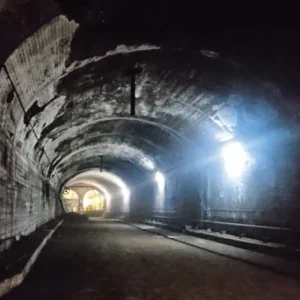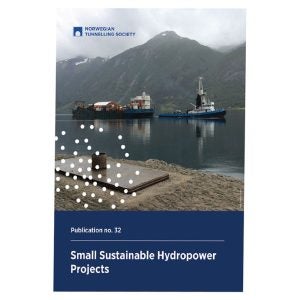The use of reinforced concrete is the predominant material of choice – but concrete comes with one major obstacle in that it has a natural and inherent tendency to absorb (and transmit) water and thereby any contaminants contained within it. Such contaminants may be sufficiently aggressive to attack and degrade concrete and/or reinforcement. There are a variety of ways of providing the necessary level of protection and traditionally, these will invariably mean the installation of some form of ‘waterproofing’ barrier in the form of a either a membrane or a specialised coating to concrete.
Before discussing an optimum solution, it is necessary to look at the various ways that concrete can be attacked or corroded. Cementaid has identified eleven potential mechanisms of corrosion that can occur.
- Chloride-induced corrosion to reinforcement Typically steel reinforcement is embedded in the highly alkaline environment provided by the cement paste in concrete; this leads to the development of a ‘passive layer’ at the steel/concrete interface in the form of an iron oxide film (Fe2O3) which protects against rebar corrosion. In order for an active corrosion cell to be formed, there are three vital components which need to be considered: first, chloride salts must reach the level of the rebar cover which has the effect of reducing the alkalinity, thereby breaking down the ‘passive layer’; second, oxygen to fuel the corrosion cell (oxidisation); third, an electrolyte to link anodic and catholic regions of reinforcement. Water ingress is therefore a vital component as water is both the carrier of chloride salt in solution and also provides the vital electrolyte linking the anode to the cathode.
- Sulphate attack Cement is composed mainly of two minerals: tri-calcium silicates (C3S) and di-calcium silicates (C2S). Upon hydration, the main reaction products are a calcium silicate gel (C-S-H) and calcium hydroxide Ca(OH)2 or CH in cement chemistry. Moisture (water) makes this reaction happen and when it does can cause serious structural damage to both the slabs and walls in buildings.
- Freeze/thaw damage Spalling of the surface of concrete occurs when the water or moisture within the concrete is subjected to freezing temperature, causing the formation of ice. The ice will occupy a greater volume within the pore and capillary structure than the water from which it was formed and so lead to expansive stress.
- Alkali-aggregate reaction (AAR) or alkali-silica reaction (ASR) This is a deleterious swelling reaction that occurs over time in concrete between the highly alkaline cement paste and the reactive amorphous (i.e. non-crystalline) silica found in many common aggregates, given sufficient moisture (water). The hygroscopic gel formed swells and increases in volume when absorbing water: it exerts an expansive pressure inside the siliceous aggregate, causing spalling and loss of strength of the concrete, finally leading to its failure.
- Delayed ettringite formation (DEF) This is expansion and cracking of concrete associated with the delayed formation of the mineral ettringite which is a normal product of early cement hydration. DEF is a result of high early temperatures (above 70oC – 80oC) in the concrete which prevents the normal formation of ettringite. DEF-induced damage is not a common phenomenon in concrete. Water or moisture from an external source is required for the reaction to occur, the availability of which will affect both the rate and the extent of expansion.
- Acid attack This occurs in numerous ways but, in tunnelling, oxidation of sulphide minerals in clay adjacent to the concrete can produce sulphuric acid which reacts with concrete. Also, the bacterial action in sewers and the anaerobic bacteria produce sulphur dioxide which dissolves in water and oxidises to form sulphuric acid which will be drawn by capillarity deep into the concrete. Another form of acid attack is carbonation – the reaction of carbon dioxide in the environment with the calcium hydroxide in the cement paste. This produces calcium carbonate and lowers the pH to around nine. At this value, the protective oxide layer surrounding the reinforcing steel breaks down and corrosion becomes possible. The reaction of carbon dioxide and calcium hydroxide only occurs in solution so in very dry concrete carbonation will be slow.
- Galvanic corrosion Galvanic corrosion is an electrochemical process in which one metal corrodes preferentially when it is in electrical contact with another, in the presence of an electrolyte. An example of this is where external metal fittings are attached to a steel reinforced concrete wall.
- Surface spalling When concrete absorbs water containing salt (e.g. seawater) and is subjected to repeated wetting and drying, (tidal movement), the water evaporates during the drying phase but the salt remains within the outer layer of the concrete surface. Upon re-wetting, the salt crystals will expand causing breakage and spalling of the outer layer.
- Expansion/contraction cycling Any concrete element will expand when it gets wet and shrink when it is dried (wetting expansion and drying shrinkage as measured by BS1881- 5). If that concrete element is fully restrained it will tend to crack due to the stresses induced.
- Extreme temperature (fire damage) Concrete is frequently used for its fire-retardant properties. But if it is subjected to rapid and intense heat, the moisture within the concrete pores will form steam which can exert sufficient internal pressure to crack or delaminate the surface (spalling).
- Pure water (decalcification) Pure water, moorland water etc. has the effect of decalcifying and causing embrittlement of concrete.
In summary, each of the above 11 mechanisms requires the presence of water; if water is kept out of the equation, none of them can occur.
Traditionally, ‘waterproofing’ has involved the use of some sort of physical surface barrier – whether tanking, membranes or coatings – to prevent water ingress, but none of these alter the susceptibility of concrete itself to resist the various corrosive mechanisms listed above. Furthermore, designers rely on the absolute assurance that the membrane/ barrier is perfectly installed with no weak points or holes which will allow water to come into contact with concrete. Another major concern is that external barriers cannot be repaired from the inside of the structure – once the concrete is placed they are concealed and irreparable.
There has to be a better way to make the concrete intrinsically ‘waterproof’. If an external barrier was not needed, the design and build would be simpler, it would be repairable and there would be significant cost savings in labour and time. Better still, water and contaminants would be kept out or, where needed, kept in.
In order to fully understand the required properties of a truly waterproof and damp-proof concrete, it is necessary to examine the way in which water is transmitted through normal concrete and the reason for this.
Water Transmission Mechanisms
There are three basic mechanisms of water transport through concrete. Absorption, permeability and diffusion; of these, absorption is by far the greatest concern. All concrete is inherently porous by virtue of the natural capillaries which form as concrete is going through its hydration phase. It is helpful to examine the theoretical capillary volume in a typical high strength, low water:cement ratio concrete. Taking a concrete mix containing 400kg/m3 of cement and using a good quality water-reducing super plasticiser to provide a water:cement ratio of 0.38 and a placement slump of 100mm, it can be calculated that the total water added, including any water in the aggregates, is 152 litres. Of this, only around 88 litres is actually required to hydrate the cement, (water:cement ratio 0.22). The surplus water (in this case 64 litres) is necessary to provide ‘workability’ and to allow for ease of transport and placement on site. However, as this concrete is going through its initial hydration phase, the surplus water will migrate to the surface and evaporate. And no matter how well the concrete is cured, this will leave a network of capillaries equal to the volume of excess water. In this case, 64 litres – or at least 6.4% of the volume of this high-quality concrete will be ‘capillaries’ or ‘permeable voids’.
As is well known, capillaries cause ‘suction’ – typified by the way trees draw water from the ground; pressure is not required. Both ‘permeability’ and ‘diffusion’ are measures of water transport through a fully saturated medium and while these are important considerations, absorption is the dominant concern.
The usual way that permeability is measured (for instance in DIN1048) is to subject samples to a head of pressure over a given area and a given time and then measure the depth of ingress after physically breaking open the samples. Depending on the density of that concrete, the depth of ingress will be anything between 3–15mm, and from this data a permeability coefficient can be calculated. At this measured depth, the pressure is dissipated, and absorption takes over in transporting water from the wet to the dry side of the concrete. These two basic mechanisms are highlighted in ACI designations for ‘permeability-reducing admixtures’ (PRAs) where they are categorised as PRA-N (not subjected to hydrostatic pressure) or PRA-H (subjected to hydrostatic pressure). Usually, PRAs are one or the other – frequently in tunnelling, both are required.
Cementaid’s Caltite HPI provides exactly this. HPI is both ‘hydrophobic’ (preventing capillary absorption) and ‘poreblocking’ (preventing water penetration resulting from hydrostatic pressure) by two distinct and separate mechanisms.
The HPI (added to concrete at the batch plant) reacts with components of cement to form a highly water repellent lining to the capillaries. This has the effect of fundamentally altering the contact angle (surface tension) within the cement matrix. Put simply, the capillaries no longer suck water, they repel it.
A second component, the pore-blocker, physically blocks the capillaries and voids throughout the cement matrix should the concrete be subjected to high hydrostatic pressure, meaning that only the outer few millimetres of concrete can be ever be wetted. When it comes to proof of the efficacy of an integral water-proofer both for preventing water ingress and providing durability, there is a variety of laboratory procedures which can be considered.
Apart from the obvious need to ensure compliance with the requirements of EN934-2 table 9 (Water Resisting Admixtures) with the simple capillary-rise test described in EN 480-5, it is also insightful for instance to look at ‘water absorption’ (as described in BS1881-122). In this, a seven- or 28-day-old sample is oven-dried, weighed, subjected to water immersion for as little as 30 minutes and then re-weighed to measure the increase in mass. With Cementaid HPI, capillary rise will consistently demonstrate a 75% reduction (against control) and water absorption will always be less than 1%. Other possibilities can include calculating the depth of ingress (permeability), chloride diffusion, chloride resistivity, ISAT (initial surface absorption) and many other ‘laboratory performed tests’.
Data involving seven- or 28-day concrete and a wetting duration of as little as 30 minutes is useful from an academic standpoint but in reality, says very little about the performance of site-produced and placed concrete over real time and in the real world requiring a ‘design life’ of say, 60 years.
To enable an understanding of the longer-term properties of ‘water-proof’ concrete, advanced accelerated test procedures can be considered. An example of such a test was carried out by Dundee University and involved the manufacture of mock-up sea walls, artificially subjected to high levels of loading and placed in environmental chambers where they were subjected to repeated wetting and drying cycles with warm, highly saline water spray.
The hypothesis was that this procedure would accelerate a real-life corrosion process by a factor of 26. These trials ran for six months and compared results between normal highquality concrete and those for similarly proportioned concrete containing HPI.
Conclusions
- Concrete structures with Everdure Caltite admixture out-perform those with ordinary Portland cement concrete by all available measures.
- Corrosion does not initiate in concrete structures with Everdure Caltite admixture until after about 26 years, compared with just six months for those with ordinary concrete *
- Furthermore, corrosion in concrete structures with Everdure Caltite admixture reduces the load-carrying capacity of the structures by only 2% in about 50 years.
*This demonstrates a life expectancy of 52 times that of ‘normal’ concrete and is an example of the many accelerated test programmes where ‘real life predictions’ have been determined.
But what about ‘real life’? It is the view of the author that the only true test is the real performance of actual structures over real time and it is here that the major advantage of using HPI can be truly and accurately assessed. In the early 1960’s, a water pipeline was constructed running across a tidal salt pan in South Australia by the Engineering and Water Supply Department (EWS).
After just two years, the concrete chairs supporting the pipeline in this particularly ‘aggressive’ area were showing significant corrosion due to the massive levels of sulphate and chloride salts contained in the ground-water. In 1962, EWS decided that rather than closing down the pipeline, that they would repair the affected chairs by constructing a 150mm thick ‘jacket’ around the originals. This also meant that unlike the originals, the jackets would need to be reinforced.
The jackets were constructed using an identical concrete mix, but this time including Caltite HPI. One of the originals was left in place to allow for a future visual comparison.
This only leaves the practical implementation of HPI in tunnels and how the simple timesaving and lifetime proven benefit of using membrane-free waterproofing is realised across the world. The above examples are just a few of the hundreds of projects which have benefitted from the use of HPI technology. Readers who would like to learn more or have any questions are kindly requested to contact the author kenhowes@cementaid.com






